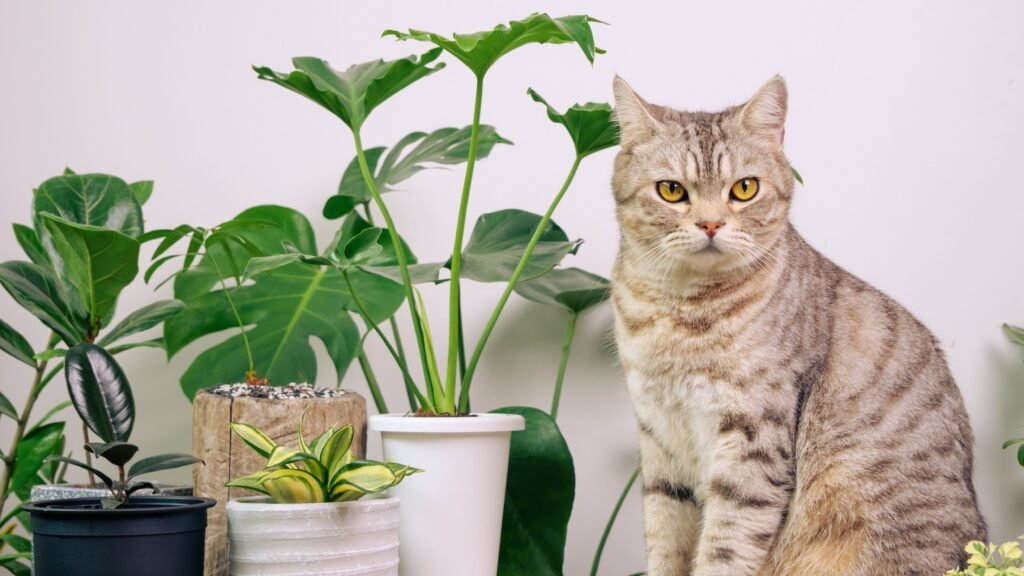
Safe Plants vs. Toxic Plants for Cats
Published: September 8th, 2025
Discover which houseplants are safe for cats and which are toxic. Keep your feline friend healthy with this guide to cat-safe plants and dangerous greenery to avoid.
Why Cat Owners Need to Know About Safe vs. Toxic Plants
If you share your home with a cat, you know they love to explore every corner, climb every shelf, and—of course—nibble on houseplants. While this curiosity is cute, it can also be risky. Many common houseplants are toxic to cats, and even a small taste can lead to stomach upset—or worse.
As professional cat sitters, we’ve seen firsthand how important it is to create a safe home for pets. This guide will help you identify cat-safe plants, avoid toxic plants for cats, and know what to do if your cat takes a bite of the wrong greenery.
Why Cats Chew on Plants
Cats chew plants for different reasons—sometimes it’s boredom, sometimes it’s instinct. Some cats enjoy the texture of leaves, while others may use grass-like plants to help with digestion. Whatever the reason, it’s up to us to make sure the plants in their environment are safe.
Why Cat Owners Need to Know About Safe vs. Toxic Plants
Good news: not every plant spells trouble! Here are some cat-friendly houseplants you can enjoy without worry:
Spider Plant – Non-toxic and fun for cats to bat at.
Areca Palm & Parlor Palm – Safe tropical options for your home.
Cat Grass (wheat, oat, or barley grass) – A healthy choice your cat can chew.
Boston Fern – Adds greenery without risk.
African Violet – A colorful, non-toxic flowering plant.
These plants allow you to decorate your home while keeping your feline safe.
Toxic Plants for Cats to Avoid
Sadly, many popular houseplants are poisonous to cats. Here are some of the most dangerous:
Lilies (all varieties) – Extremely toxic; even small amounts can cause kidney failure.
Pothos (Devil’s Ivy) – Causes vomiting and oral irritation.
Aloe Vera – Healing for humans, harmful for cats.
Sago Palm – Highly poisonous and potentially fatal.
Philodendrons & Monstera – Trendy but toxic.
👉 Pro tip: Use the ASPCA’s Toxic and Non-Toxic Plant List whenever you’re unsure about a plant.
What to Do If Your Cat Eats a Toxic Plant
If you think your cat has chewed a toxic plant:
Remove access immediately.
Watch for symptoms like vomiting, drooling, or lethargy.
Call your veterinarian or a pet poison hotline right away.
Quick action can save your cat’s life.
Final Thoughts on Cat-Safe Plants
Cats and plants can live together peacefully—as long as you choose wisely. By filling your home with cat-safe houseplants, you’ll enjoy greenery without risking your pet’s health.
And if you’re going on vacation, let your cat sitter know about your plants. That way, they can keep an eye on your cat’s environment, not just the cat itself. A safe home is a happy home for both you and your furry friend!
✨ At Feline Tails, we’re proud to be NYC’s premier cat sitting service, trusted by cat parents across the city. Whether you’re in Manhattan, Brooklyn, or Queens, we bring peace of mind straight to your doorstep.

One Response